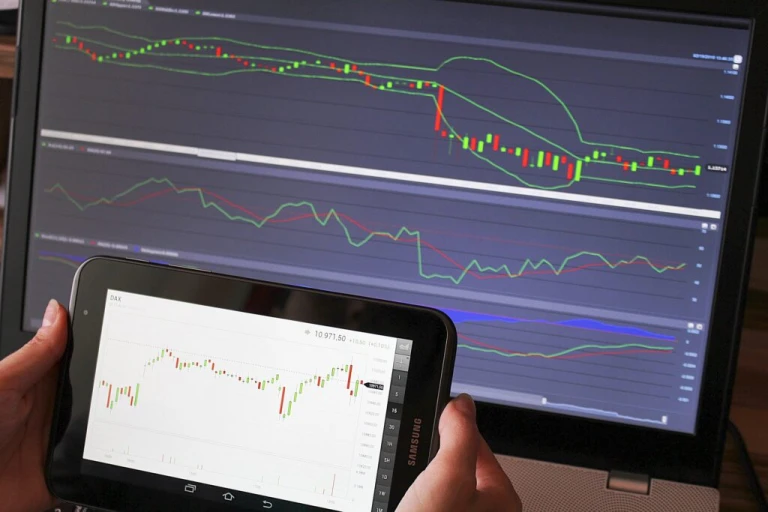How to use Technical Analysis for Forex?

Technical analysis is a vital tool in Forex trading. By understanding technical analysis, you can make informed decisions about when to buy and sell currency pairs. There are many different aspects to technical analysis, but some of the most important include candlestick charting, trend lines, support and resistance levels, and Fibonacci ratios. In this blog post, we will explain how to use each of these technical analysis tools to help you make better Forex trading decisions.
What is technical analysis?
Technical analysis is a method of analyzing financial markets that uses past price data to identify trends and predict future prices. Technical analysts believe that price patterns repeat themselves and that by analyzing these patterns, they can forecast where prices are headed.
How can you use technical analysis?
One of the benefits of technical analysis is that it can be applied to any security traded on an exchange, regardless of its size or price. This makes it a useful tool for Forex traders, who must contend with a large and constantly fluctuating market.

Types of tools and techniques used in Technical Analysis
There are many different ways to use technical analysis when trading Forex. Some common techniques include:
- Identifying support and resistance levels
- Using trend lines
- Studying candlestick chart patterns
- Analyzing moving averages
Let us know more about these techniques;
Identifying support and resistance levels:
Support and resistance levels can be identified by looking at past price action. They are typically marked by highs and lows on a candlestick chart. The more times a particular level is tested, the stronger it becomes.
Once you have identified a support or resistance level, you can then use this information to help make trading decisions. For example, if the price of a currency pair is approaching a major resistance level, you might consider selling. Conversely, if the price is nearing a key support level, you might want to buy.
Using trend lines:
A trend line is a straight line that connects two or more price points on a chart. Trend lines are used to identify and confirm trends. They can also be used to predict future prices, providing entry and exit signals for trades.
There are two types of trend lines:
1. Uptrend: An uptrend is when the price is moving higher. To draw an uptrend line, simply connect two or more successive lows on the chart.
2. Downtrend: A downtrend is when the price is moving lower. To draw a downtrend line, simply connect two or more successive highs on the chart.
Once you have drawn your trend line, you can use it to make predictions about future prices. If the price is in an uptrend, you can expect it to continue moving higher; if the price is in a downtrend, you can expect it to continue moving lower. You can also use trend lines to generate entry and exit signals for trades.
If the price breaks above an uptrend line, it may be a signal to buy; if the price breaks below a downtrend line, it may be a signal to sell. However, false breakouts do occur, so it’s important to confirm any breakout with other technical indicators before making a trade decision.
Studying candlestick chart patterns:
Candlestick chart patterns are a key component of technical analysis and can be used to predict future price movements in the Forex market. There are many different candlestick patterns that can be used, but some of the most common include the bullish engulfing pattern, the bearish engulfing pattern, and the hammer pattern.
When studying candlestick chart patterns, it is important to look at the size and shape of the candlesticks, as well as the location of the pattern on the chart. The size of the candlesticks can give clues about the strength of buyers or sellers. Candle stick’s shape can indicate whether there is bullish or bearish momentum. The location of the pattern can also be important, as some patterns are more reliable when they occur at certain points in a trend.
There is no one perfect way to trade candlestick chart patterns, but by understanding how they work and incorporating them into your technical analysis, you can give yourself an edge in the Forex market.
Analyzing moving averages:
When analyzing moving averages, it’s important to look at the overall trend. If the trend is downward, then you’ll want to sell when the price crosses below the moving average. If the trend is upward, then you’ll want to buy when the price crosses above the moving average.
You can also use moving averages to identify support and resistance levels. If the price is bouncing off of a moving average, then that average may be acting as a support or resistance level.
Finally, you can use moving averages to help you time your entries and exits. For example, if you’re trying to catch a breakout, you might wait for the price to cross above a long-term moving average before entering a trade.
The Theory of Technical analysis
Technical analysis is the study of past market data to identify patterns and predict future market behavior. The main theory behind technical analysis is that price action reflects all relevant information about a security and that history tends to repeat itself.
There are two main schools of thought when it comes to technical analysis:
1) Fundamentalists believe that economic factors drive price action. Also they believe that technical analysis is only useful for identifying overbought or oversold conditions. They believe that analyzing price action is a waste of time because all relevant information is already reflected in prices.
2) Technical analysts believe that prices move in trends and that these trends can be identified and used to make profitable trading decisions. They believe that analyzing price action is the best way to identify these trends as they are developing.
The debate between technical analysts and fundamentalists has been going on for centuries, with no clear winner. It is up to each individual trader to decide which approach they prefer. Many traders use a combination of both technical and fundamental analysis when making trading decisions.
Objectives of Technical analysis
There are two main objectives of technical analysis:
1. To identify market trends
2. To forecast future market prices
Trends can be identified by studying price charts and other data, such as volume and open interest. Once a trader has identified a trend, they can then use technical analysis to try to forecast where the market is headed next. This is done by using various indicators and chart patterns.
Forecasting is not an exact science. However, technical analysis can give traders an edge by helping them make more informed decisions about their trades. By correctly identifying market trends and using technical analysis to forecast future prices, traders can increase their chances of success in the Forex market.
Why is technical analysis is important?
Technical analysis is important for Forex traders because it can be used to identify trading opportunities, set stop-loss and take-profit orders, and predict future market movements.
Traders who use technical analysis believe that all relevant information about a currency pair is reflected in its price, and that by analyzing historical price data they can gain insights into how the pair is likely to move in the future.
There are a number of different technical indicators that Forex traders can use to analyze price data. And also many different ways to interpret the resulting patterns. Some common technical indicators used in Forex trading include moving averages, support and resistance levels, and Fibonacci levels.
One of the main advantages of technical analysis is that it can be used to make automated trading decisions using software programs known as expert advisors. These programs can scan the market for potential trading opportunities and then execute trades on behalf of the trader.









